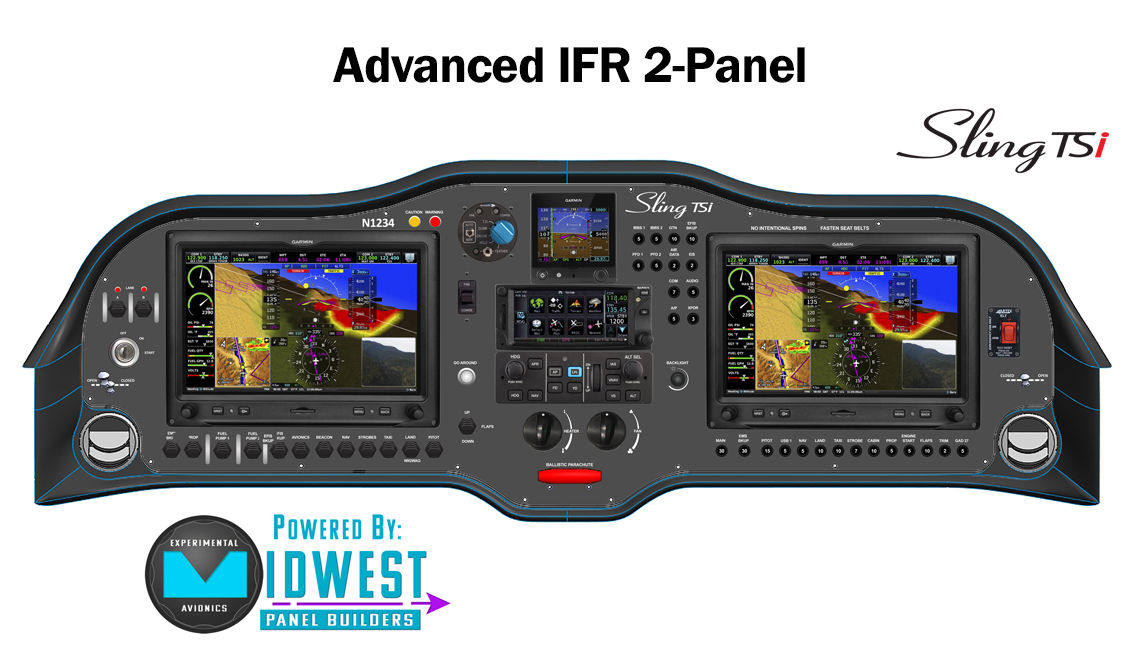Kit Decisions
Even after you have chosen the right plane for your mission, the number of configurations available is essentially unlimited.
Aircraft
Given my average mechanical skills and work/family committments I'm planning a quick build kit. However the lead time on deliveries is up to 12 months, which is a good problem for the factory to have, but bad for my itch to get on with the project.
Consequently I'm going to order the standard build empennage separately to get started on, which hopefully should only be a month or two away. It's not clear that the quick-build empennage really adds a lot over the standard build, given the 51% requirements.
I'm going to install long-range tanks, not because I intend using them all that much, but I am dreaming of some international trips to the Pacific Islands north of NZ one day. It's 452nm from NZKT (Kaitaia) to YSNF (Norfolk Island) and another 431nm to NWWW (Noumea, New Caledonia). With the long range tanks, I'd have the range to fly each leg, abort, and return to the origin with reserves, which is great for safety.
For much the same reason I'm including the parachute and autopilot with separate panel. The availability of a blue level button and a red parachute handle is a strong positive for passenger safety. A glide into a field is great if you're over flat land, but over hostile terrain or in case of pilot incapacitation it can make all the difference.
I'm going to think some more about the hand-brake, but am leaning towards the toe brakes as it's what I'm used to and I like the differential steering they provide.
I'll just have to be a bit careful with any extra quick-build or panel assistance, as the NKET factory percentage is already 48.02% for the Sling 4 (which seems to be in use for the TSi) so there isn't much room to get any extra work done. It looks like I'll have to do the landing gear myself, but am hoping to get the fuel tanks done by the factory.
Engine and propellor
A Rotax 915iS and Airmaster automatic constant speed propellor are standard and a great combination. Turbocharging and FADEC make a great combination for cross-country, no worries about prop pitch, leaning or poor performance at altitude.
Avionics
I'm planning on a fairly high-spec build with a Garmin G3X-based panel and full IFR (VOR/DME + GPS RNP) capability.
NZ is currently decommissioning the majority of its existing enroute and smaller regional VOR/DME stations (and NDBs are being withdrawn entirely) in favour of ADS-B and GPS RNP, however retaining a minimum network of ground radio stations for emergency use and/or loss of GPS.
Consequently as far as I can ascertain a single TSO‑C146 IFR navigator (e.g. a GTN series) will suffice for GPS navigation with a G3X or G5 VFR GPS as backup, however NZ's CAA are requiring private operators maintain VOR/DME equipment for emergency use to fly IFR/recover in IMC. Consequently a GPS-only IFR navigator such as the GNX 375 won't be enough, which is annoying as it is much cheaper and would remove the requirement for a separate transponder.
There is an upcoming CAA briefing on the New Southern Sky (NSS) programme at Hawera Aero Club on March 4th, so I'll try to get some clarity then.
Electrical
The main decision here is the use of standard circuit breakers versus an integrated electronic breaker system, the Vertical Power VP‑X.
Initially I was quite keen on the VP‑X, as it integrates with the G3X and provides a complete overview of the electrical system, allows centralised breaker control and reset, and protects trim and flaps from runaway, as well as "wig-wag" lighting.
However I'm probably not going to use it for a number of reasons:
- Circuit breakers are already very reliable, and a single breaker failure won't take out the entire electrical system.
- Most advanced functions the VP‑X provides are also available directly from the G3X (with the GAD‑27) so the only real gain in functionality is the monitoring interface from the G3X
- Entrusting the entire electrical system to a single vendor's product is somewhat risky.
I'm already planning to get a custom harness and panel, likely from Midwest Panel Builders, so won't have to worry about complex avionics wiring myself anyway.
